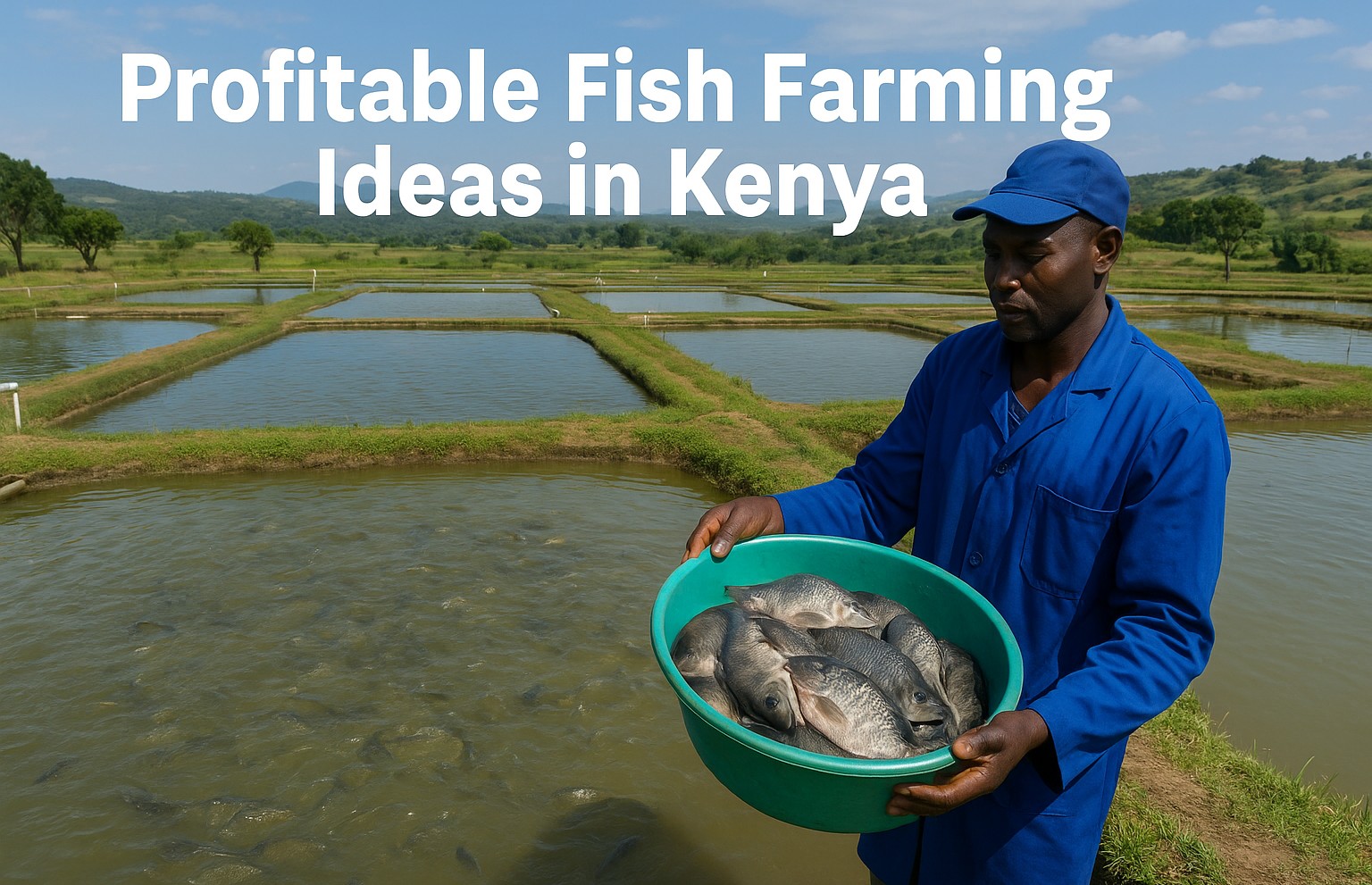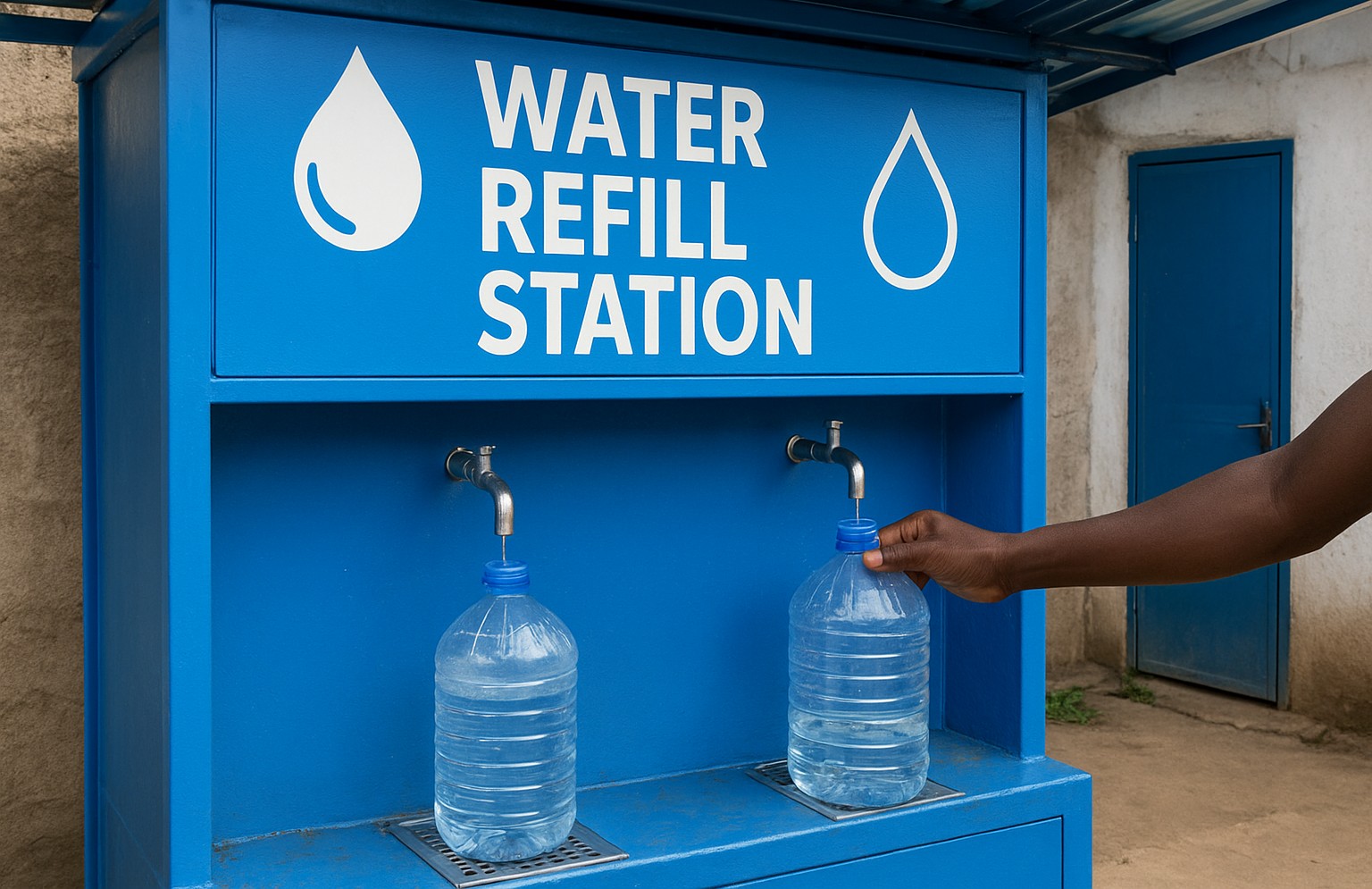

Titus Morebu
Author
Profitable Fish Farming Ideas in Kenya: Top Opportunities & Smart Strategies
Explore the most viable, high-return fish farming ventures in Kenya, with modern methods, species ideas, cost breakdowns and growth tips for success.
Why Fish Farming Can Be a Game-Changer in Kenya 🐟
Fish farming (aquaculture) in Kenya is rapidly gaining traction as one of the most promising agribusiness ventures. With rising demand for fish proteins and imports unable to satisfy demand, Kenyan entrepreneurs have a unique window of opportunity. When done right, fish farming can deliver stable incomes, food security, and community development.
According to recent studies, **cage fish culture in Lake Victoria** showed average net farm incomes of ~ KES 1,020,500 per production cycle with a benefit-cost ratio of 1.43. This reveals strong margins for well-managed operations.
Furthermore, a USD 10 million project by WorldFish recently launched to provide genetically improved tilapia for Kenyan farmers, underlining international support for aquaculture growth.
Top Profitable Fish Farming Models & Ideas in Kenya
Below are the fish farming ideas with highest potential (and how to implement them):
1. Tilapia Pond Culture
- Why it’s profitable: Fast growth, good feed-conversion rate, wide consumer demand.
- How it works: Earthen ponds, lined ponds or hapa (net) enclosures. Stock ~2–3 fish per m² (for small ponds) depending on system design.
- Cycle time: 6–8 months to reach market size under ideal feeding and water quality.
- Revenue potential: Small-scale farmers report earning ~ KES 75,000 monthly from one pond when optimized.
2. Catfish (Clarias) Farming
- Strengths: Tolerant of lower water quality, hardy in variable environments.
- Growth rate: Can take 9–12 months to reach market size under moderate conditions.
- Market: Strong demand from hotels, restaurants, and local markets.
3. Cage/Aquaculture in Open Waters (Lake Victoria & Others)
Instead of ponds, enclose floating cages in lakes or reservoirs.
- Case study: In Lake Victoria, cage farmers realized gross margins of ~ KES 1,146,700 per cycle and net incomes of ~ KES 1,020,500. Benefit-cost ratio ~1.43.
- Advantages: Larger scale, lower land cost, good water exchange.
- Challenges: Exposure to storms, theft, cage maintenance.
4. Aquaponics / Integrated Fish–Vegetable Systems
This hybrid model combines fish rearing and plant production in a closed-loop, nutrient-cycling system (fish waste feeds plants, plants clean water for fish).
- Benefits: Dual income streams (fish + vegetables/herbs).
- Space efficient: Good option for urban or peri-urban farms with limited land.
- Market appeal: Ability to brand produce as organic, local, fresh.
5. Rice–Fish Farming (Polyculture)
Integrate fish culture in rice paddies (rice-fish system). The fish help in pest control and fertilization, while rice gives cover and feed sources.
- Benefit: Maximizes output per land unit.
- Best species:
6. Specialty / Niche Species
- Ornamental fish: Aquariums, decorative species.
- Shrimp or marine aquaculture: If coastal zones or saline water sources exist.
How to Choose the Right Model for You
Here are key criteria to help you select the optimal fish farming idea:
- Land & water availability: Do you have flat land with suitable soil and a dependable water source?
- Access to markets: Are there restaurants, hotels, traders, or fish processing factories nearby?
- Initial capital & financing: Some models (like cages or aquaponics) demand higher upfront costs.
- Technical capacity: Do you or your team have knowledge in water quality, fish husbandry, disease control?
- Risk tolerance: Pond systems are safer; open-water cages carry more external risks (storms, vandalism).
Step-by-Step Guide to Starting
Market & Feasibility Study
Validate demand, price points, supply gaps, and buyer willingness in your region. Visit hotels, markets, fish shops, and conduct surveys.
Site Selection & Design
- Choose land with good soil and drainage.
- Ensure constant clean water supply (river, borehole, springs).
- Orient ponds to avoid flooding and support ease of harvest and feeding.
Permits, Licensing & Regulations
Register with Kenya Fisheries Service, secure environmental impact assessments (if needed), and follow local zoning laws.
Construction & Infrastructure
- Build ponds (earthen, lined) or construct cages.
- Install water inlets, outlets, aeration, filtration (if needed).
- Construct storage rooms, feed sheds, security fencing.
Stocking & Fingerlings
- Use high-quality fingerlings from certified hatcheries (disease-free).
- Stock at optimal densities (depends on species and system).
Feeding & Nutrition
- Use commercial fish feeds calibrated to species growth stage.
- Supplement with local feed ingredients (maize, soybean, maggots, insects) to reduce cost.
- Monitor feed conversion ratio (FCR) — aim for low FCR.
Water Quality & Health Management
- Monitor pH, dissolved oxygen, ammonia, nitrites, temperature.
- Use aeration, water exchange, biofilters in closed systems.
- Quarantine new stock; treat disease outbreaks promptly.
Harvesting, Processing & Packaging
- Harvest at ideal sizes when market demand peaks.
- Use clean handling, chilling, and packaging to maintain quality.
- Offer smoked or value-added fish to increase margins.
Marketing & Sales Strategy
- Link with local wholesale fish shops, supermarkets, hotels.
- Brand your product (e.g. “fresh Kenyan tilapia”) and market online/social media.
- Join cooperatives or selling groups to aggregate volume and access bigger contracts.
Scaling & Diversification
- Reinvest profits into expanding pond area or adding new systems.
- Diversify into ancillary services: hatchery, feed production, consultancy.
- Explore export or value-added (smoked, filleted fish) markets.
Cost & Financials Snapshot
| Cost Component | Estimated Range (Kenya) |
|---|---|
| Small pond (construction, liner, piping) | KES 50,000 – 200,000 |
| Fingerlings / stock | KES 15,000 – 80,000 (depending on scale) |
| Feeds (6–8 months) | KES 100,000 – 400,000 |
| Water infrastructure, aeration, pumps | KES 20,000 – 150,000+ |
| Labor & maintenance | KES 30,000 – 120,000 per cycle |
| Permits, licensing, fencing | KES 10,000 – 50,000 |
The break-even point typically comes mid- to late in the first production cycle if managed well. Profit margins tend to improve thereafter as you streamline operations.
Key Challenges & How to Overcome Them
- High feed costs: Use efficient feed, locally sourced ingredients, and optimize feeding schedules.
- Access to quality fingerlings: Partner with certified hatcheries and cooperatives.
- Market & middlemen risks: Build direct links, contracts, and a loyal customer base.
- Disease outbreaks: Practice good biosecurity, quarantine, early detection and preventive measures.
- Theft & vandalism: Install fencing, physical security, and community engagement.
- Technical knowledge gap: Engage extension services, training, online courses, partnerships with agritech firms.
Why Kenya is Poised for a Fish Farming Boom
- Local production still lags behind demand — Kenya imports significant quantities of fish annually to close the deficit.
- Government and donor support for aquaculture (e.g. Kenya Market-led Aquaculture Programme) bolster infrastructure and farmer training.
- New innovations such as genetically improved tilapia strains and fintech solutions (e.g. apps offering feed on credit) are lowering entry barriers.
Conclusion & Next Steps
Fish farming in Kenya offers some of the most robust returns among agribusiness ventures—especially when innovation, good management practices, and market alignment are applied. Start small, document performance, learn continuously, and scale strategically.
If you’re keen to dive deeper, consider: visiting existing fish farms, undergoing training with fisheries extension agents, or partnering with organizations that support aquaculture startups. The future is wet—and profitable! 🌱🐠
Gallery

Related Articles
3 articles
How to Launch a Profitable Water Refill Station in Kenya 💧
Learn how to set up a water refill business in Kenya: from permits, equipment, water safety, and marketing to profit strategies — your step-by-step guide.

How to Launch a Profitable Phone Accessories Shop in Kenya 📱
Want to start a phone accessories shop in Kenya? Learn step-by-step how to set up, source, market and grow your store for sustainable profits.

How to Launch a Successful Barber Training School in Kenya: A Step-by-Step Guide 💈
Start your own barber training school in Kenya with this actionable guide — from licensing and curriculum design to marketing and operations — and build a reputable institution.